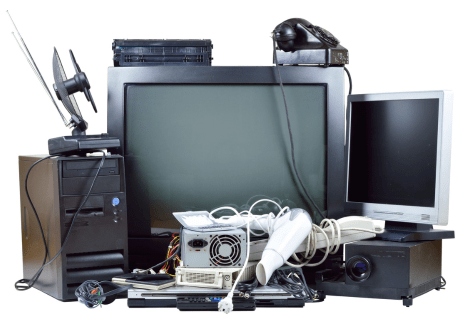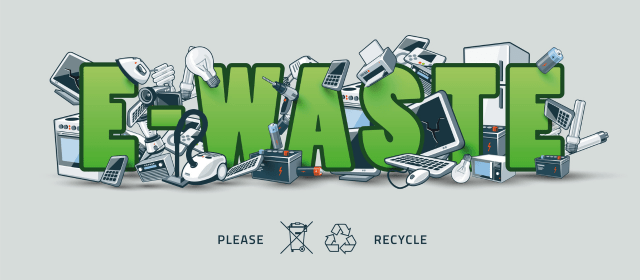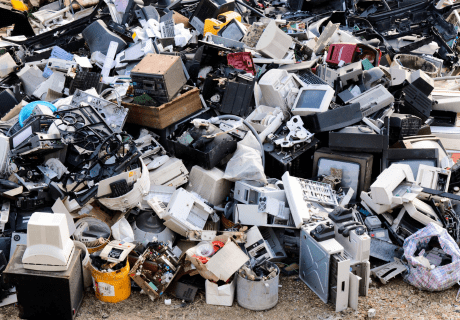How to Recycle Electronics
In today’s digital age, the constant upgrades and innovations in technology have led to a significant increase in electronic waste. Properly disposing of old electronics is crucial to minimize environmental impact and conserve valuable resources. Learning how to recycle electronics not only helps keep harmful substances out of landfills but also allows for the recovery of valuable materials that can be reused in manufacturing. In this guide, we’ll explore the steps to responsibly recycle electronics and provide information on where to recycle electronics.
Understanding the Importance of Electronics Recycling
Electronic devices contain various materials, including metals, plastics, and hazardous substances like lead and mercury. Improper disposal of these items can lead to environmental pollution and health risks. Recycling electronics ensures that valuable materials are recovered and reused, reducing the need for raw materials extraction and energy consumption in manufacturing processes.
How to Recycle eWaste
-
- Assess the Condition: The first step in learning how to recycle electronics is assessing their condition. If they are still functional, consider donating or selling them to extend their lifespan. Many organizations accept used electronics for refurbishment and redistribution to those in need.
- Data Backup and Erasure: Before parting with your electronic devices, ensure that you back up any important data and then securely erase all personal information. Use specialized software or perform a factory reset to remove all sensitive data from the device.
- Find a Certified Recycler: Look for certified electronic recycling facilities in your area. These facilities adhere to strict environmental and safety standards for handling electronic waste. Check for certifications such as R2 (Responsible Recycling), NAID-AAA or e-Stewards to ensure responsible recycling practices.
- Prepare for Drop-off or Pickup: Some recycling facilities offer drop-off locations, while others provide pickup services for larger items. Prepare your electronics for recycling by disconnecting any cables, removing batteries (if possible, see previous article on recycling those), and ensure that the devices are clean and free of any personal belongings.
- Drop Off or Schedule Pickup: Take your electronics to the designated recycling facility or schedule a pickup if available. Be sure to inquire about any fees or requirements for recycling specific items. It’s not always free.

Where Can I Recycle Electronics?
- Local Recycling Centers: Many municipalities offer electronic recycling programs or have designated drop-off locations for electronic waste. Check with your local recycling center or waste management authority for information on where to recycle electronics in your area. As an example, we are located in Monroe County, NY and our version is eco-park. They take back just about every type of recycling there is, including hazardous materials.
- Retailer Takeback Programs: Some retailers, especially those selling electronics, offer takeback programs where you can return old devices for recycling. These programs may provide incentives such as discounts on new purchases or gift cards. For example, Staples has a recycling rewards program in which you can return them directly to a store or they will ship you supplies with a return label to mail in your e-recycling. They are R2, e-stewards and NAID-AAA certified, as previously mentioned.
- Manufacturer Recycling Programs: Several electronics manufacturers have their own recycling programs to take back old products for proper disposal or refurbishment. Visit the manufacturer’s website or contact customer support to inquire about recycling options. The largest recycler in this category is ERI (Electronics Recycling International). They are certified to de-manufacture, recycle, and refurbish any electronics.
- E-Waste Recycling Events: Keep an eye out for e-waste recycling events or community clean-up initiatives in your area. These events often provide convenient drop-off locations for electronic waste and may offer additional resources for recycling other household items. I wasn’t able to find an all-purpose source for these events. However, it seems like most county websites have a page that list the year’s e-waste recycling events. Just google “your county + e-waste events” and see what pops up!
- Public Libraries: Some public libraries partner with recycling organizations to provide electronic recycling services to the community. Check with your local library to see if they offer electronic recycling programs or events. Sometimes they also have more information how to recycle electronics locally. Plus librarians would love to see someone and need something to do people, get out there!
How To Recycle Electronics By State
Check out this comprehensive list of state by state e Waste programs. The vast majority of these links are good resources provided by each state. A few of them are just the best I could find or not very expansive. Here is a list of how to recycle electronics by state.
Properly recycling electronics is essential for protecting the environment and conserving valuable resources. By following the steps outlined in this guide and utilizing available recycling resources, you can contribute to reducing electronic waste and promoting sustainable practices. Remember when learning how to recycle electronics, always research certified recyclers and explore various recycling options in your community to make a positive impact on the environment. Start today and make a difference in electronic waste management!


